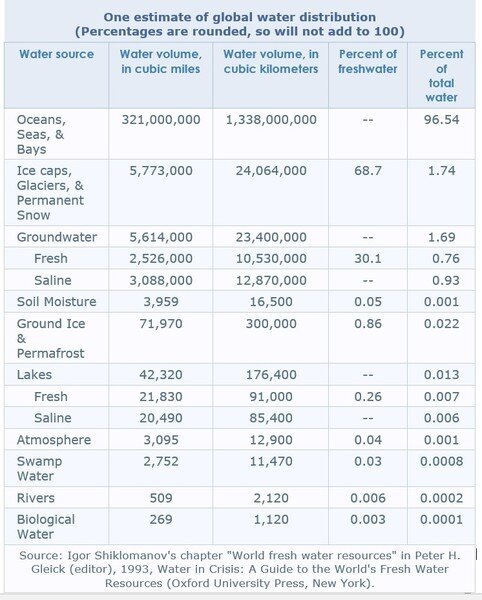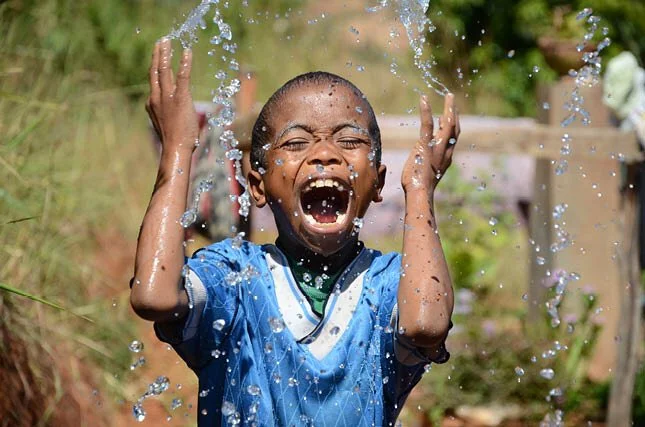Water: the Scarcest Abundant Resource
Water is certainly the most abundant resource in the world. After all, 71% of the earth’s surface is covered by water. It seems then paradoxical to say that despite its abundance, by 2025, half of the world’s population will be living in water-stressed areas. In fact, water is complex in many ways and this is due to its link to almost everything in the world: water is essential to life (as roughly 60% of our bodies is constituted of water), it is at the root of sustainable socio-economic development and healthy ecosystems.
Although 71% of the Earth’s surface is covered by water, over 96% of it is saline and contained in oceans and seas. About 1.7% of water is stored in the ground, while the rest is stored in glaciers, icecaps, in the air and precipitation. The table below gives a detailed location of water on Earth.
It is essential to maintain good water quality to ensure human health, social and economic development, and the preservation of ecosystems. As the vast majority of water is not suitable for human consumption (or for household consumption via cooking, bathing, drinking or agricultural uses), competition over freshwater increases daily. The global water crisis refers to the insufficiency of water supply to meet basic human needs and growing demands on the world’s water resources to meet human, commercial and agricultural needs. The scarcity of water can be a scarcity in availability due to physical shortage, or a scarcity in access due to a lack of adequate infrastructure. About 4 billion people experience severe water scarcity during at least one month of the year (Mekonnen and Hoekstra, 2016) and studies show that this issue will be exacerbated as rapidly growing urban areas place heavy pressure on neighboring water resources. Access to safe water remains a challenge for many countries as 1.8 billion people use a source of drinking water contaminated with feces, putting them at risk of contracting cholera, dysentery, typhoid, and polio (WHO/UNICEF 2015). This situation has a huge impact on children as 297,000 children under 5 die every year from diarrheal diseases due to poor sanitation, poor hygiene, or unsafe drinking water. (WHO/UNICEF 2019).
The United Nations and the World Health Organization are doing tremendous efforts to achieve the Sustainable Development Goal 6 which is to “ensure availability and sustainable management of water and sanitation for all.” A part of this initiative is Vera Aqua Vera Vita which is doing incredible work in Peru to address the issue of safe water and sanitation services. Providing access to safe water is definitely one of the most effective tools to promote health and reduce poverty.


